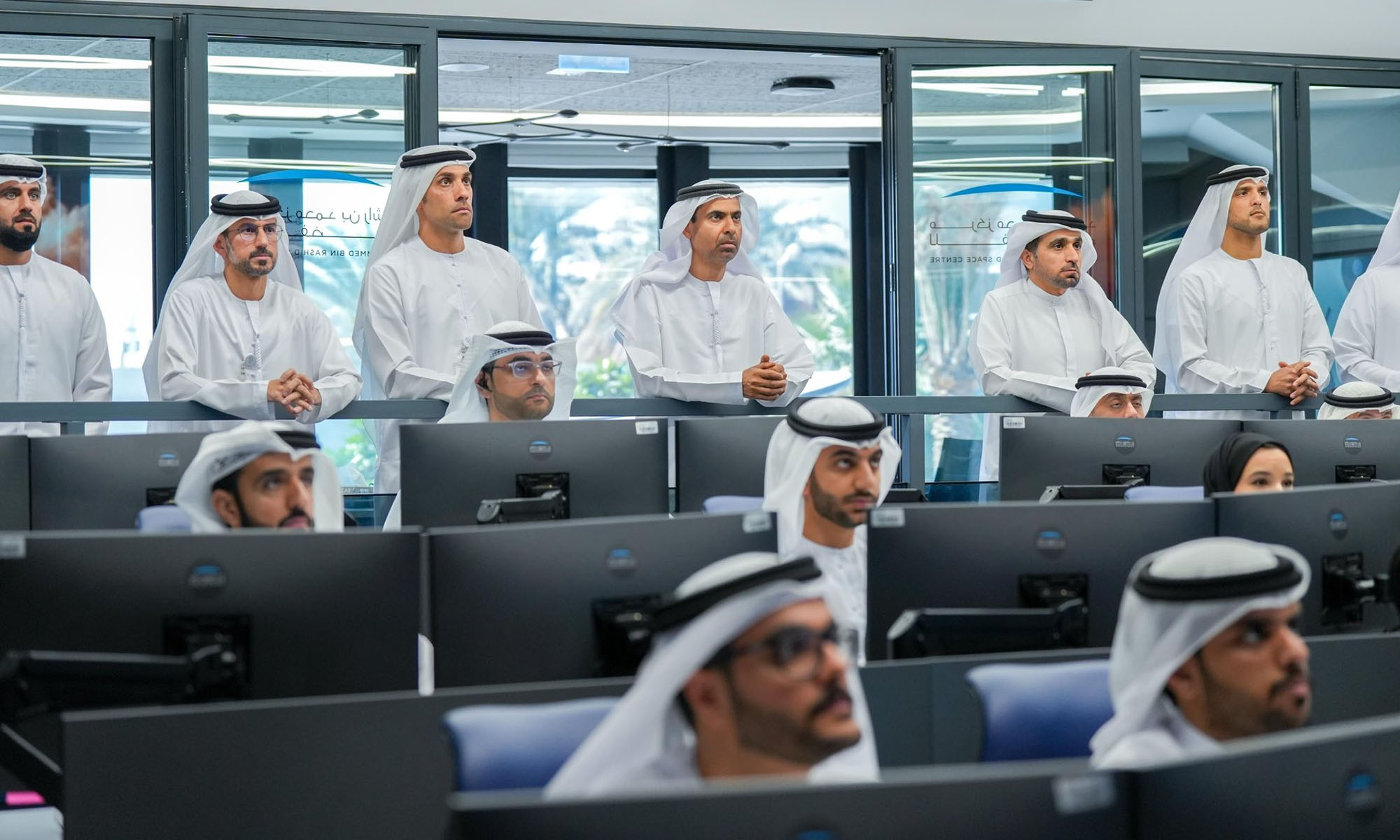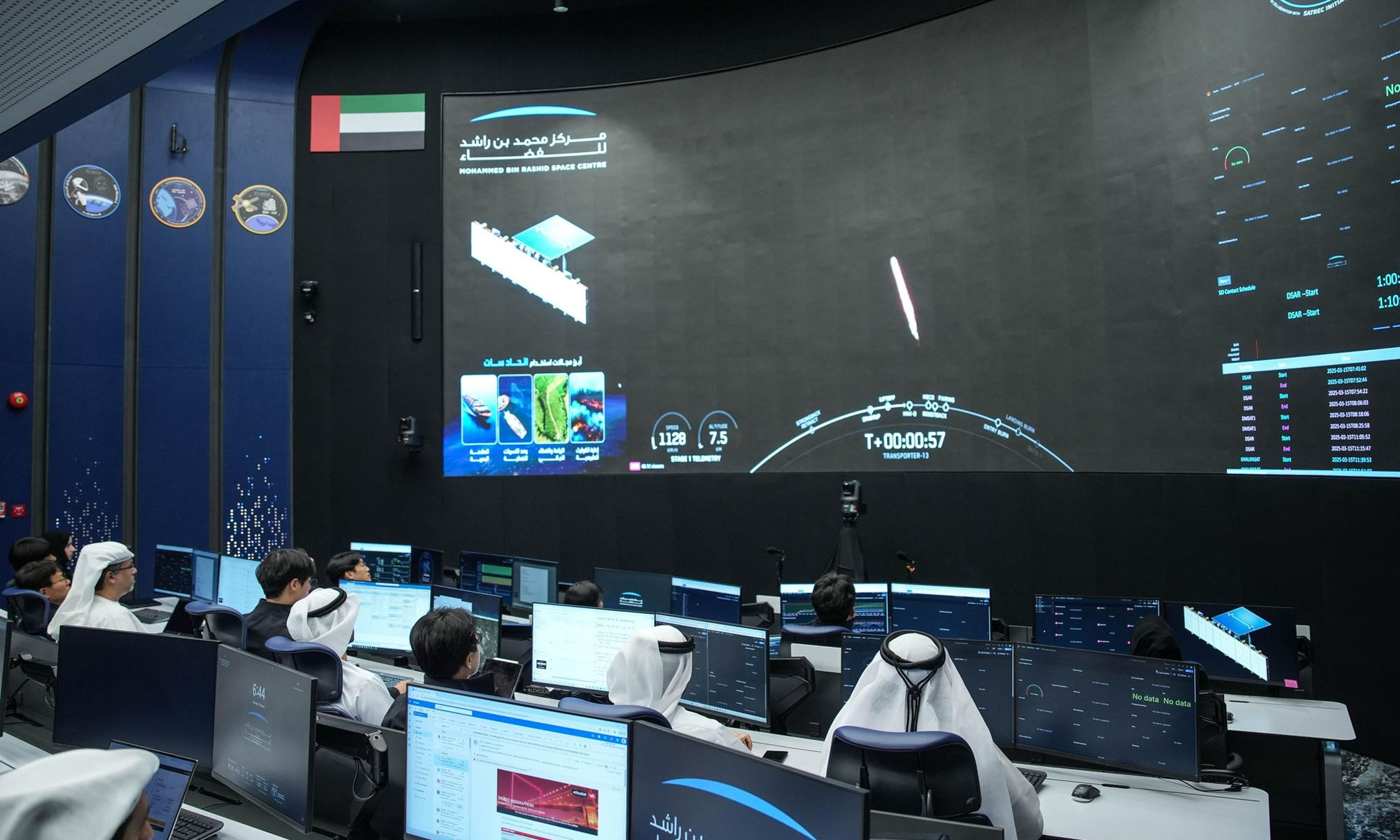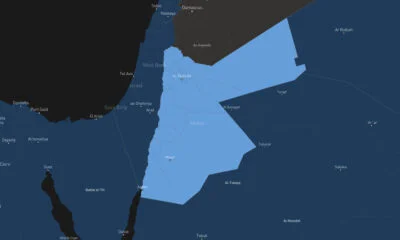News
UAE Launches First Synthetic Aperture Radar (SAR) Satellite
Etihad-SAT can detect oil spills, aid in disaster management, maritime navigation, smart agriculture, and environmental monitoring.

The Mohammed Bin Rashid Space Centre (MBRSC) successfully launched its first Synthetic Aperture Radar (SAR) satellite, Etihad-SAT, on March 15th, 2025.
In a major milestone for the UAE’s growing space program, the satellite took off from Vandenberg Space Force Base in California, USA, aboard a Falcon 9 rocket at 10:43 AM (UAE time). The first signal from Etihad-SAT was received by MBRSC’s ground station in Dubai at 12:04 PM (UAE time), confirming the mission’s success.
Etihad-SAT is the first satellite developed under MBRSC’s Satellite Development Program. Equipped with SAR imaging technology, it can capture high-resolution images in all weather conditions, day or night. The satellite offers three modes of imaging: spot mode for detailed images of small areas, scan mode for wider coverage of large regions, and strip mode for extended observation over longer distances.
This versatility makes Etihad-SAT a powerful imaging tool for a range of applications, from detecting oil spills to aiding in natural disaster management, maritime navigation, smart agriculture, and environmental monitoring. The data gathered will be processed using AI, ensuring faster and more accurate results for these applications.

Developed in collaboration with South Korea’s Satrec Initiative, Etihad-SAT is a result of months of work from MBRSC’s engineers. The team played a key role in defining the satellite’s technical specifications, conducting design and validation phases, and ensuring compliance with international standards. As part of MBRSC’s strategy, the project involved a significant focus on knowledge transfer and technology localization, ensuring that the UAE gains expertise to support future advancements in space technology.
H.E. Talal Humaid Belhoul Al Falasi, Vice President of MBRSC, commented: “The UAE is advancing steadily to become a global leader in space science and technology. This achievement, with the launch of Etihad-SAT, strengthens our Earth observation capabilities and provides valuable data for sustainable development. It also opens the door for new space technologies that will benefit the nation”.
Also Read: Space42 & Cobham Satcom Launch New Satellite Broadband Terminal
Satrec Initiative’s CEO, Ee-Eul Kim, shared his congratulations, stating: “The success of Etihad-SAT marks a significant achievement for the UAE. Our partnership with MBRSC in developing this high-resolution SAR satellite demonstrates the power of international collaboration. We are excited to continue our work together to shape the future of space technology”.
Etihad-SAT will be operated from MBRSC’s Mission Control Centre, where specialized teams will manage the satellite’s operations and analyze the data it sends back. The new capability enhances the UAE’s ability to monitor the planet more effectively, further cementing the country’s commitment to cutting-edge space technologies.
News
Google Releases Veo 2 AI Video Tool To MENA Users
The state-of-the-art video generation model is now available in Gemini, offering realistic AI-generated videos with better physics, motion, and detail.

Starting today, users of Gemini Advanced in the MENA region — and globally — can tap into Veo 2, Google’s next-generation video model.
Originally unveiled in 2024, Veo 2 has now been fully integrated into Gemini, supporting multiple languages including Arabic and English. The rollout now brings Google’s most advanced video AI directly into the hands of everyday users.
Veo 2 builds on the foundations of its predecessor with a more sophisticated understanding of the physical world. It’s designed to produce high-fidelity video content with cinematic detail, realistic motion, and greater visual consistency across a wide range of subjects and styles. Whether recreating natural landscapes, human interactions, or stylized environments, the model is capable of interpreting and translating written prompts into eight-second 720p videos that feel almost handcrafted.
Users can generate content directly through the Gemini platform — either via the web or mobile apps. The experience is pretty straightforward: users enter a text-based prompt, and Veo 2 returns a video in 16:9 landscape format, delivered as an MP4 file. These aren’t just generic clips — they can reflect creative, abstract, or highly specific scenarios, making the tool especially useful for content creators, marketers, or anyone experimenting with visual storytelling.
Also Read: Getting Started With Google Gemini: A Beginner’s Guide
To ensure transparency, each video is embedded with SynthID — a digital watermark developed by Google’s DeepMind. The watermark is invisible to the human eye but persists across editing, compression, and sharing. It identifies the video as AI-generated, addressing concerns around misinformation and media authenticity.
While Veo 2 is still in its early phases of public rollout, the technology is part of a broader push by Google to democratize advanced AI tools. With text-to-image, code generation, and now video creation integrated into Gemini, Google is positioning the platform as a full-spectrum creative assistant.
Access to Veo 2 starts today and will continue expanding in the coming weeks. Interested users can try it out at gemini.google.com or through the Gemini app on Android and iOS.

























